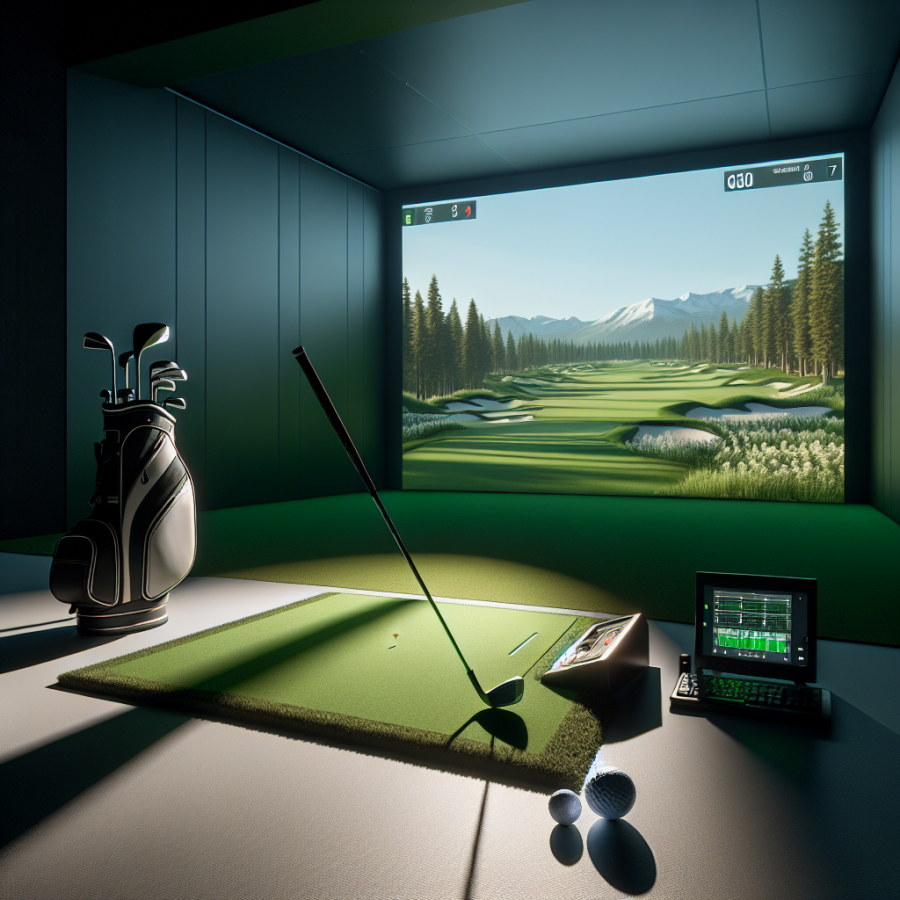Types of Golf Simulators and Their Respective Costs
Golf simulators come in several different types, each with their respective costs. Understanding these different options is key to determining which option is best for your budget, needs, and space.
Firstly, there are the most affordable options, mobile applications and basic golf simulators. Some golf simulator apps can be downloaded onto your smartphone or tablet, allowing you to get a basic feel for simulated golfing without a large financial commitment. While far less immersive than a full simulator setup, these can cost from just $20 to $200, depending on the in-app options available. A step up from this would be basic golf simulators, which are designed for home use and can cost anywhere between $500 and $2000. These include hitting mats, nets and a golf simulator software, which usually have to be linked to your laptop or TV.
Next, there are middle-of-the-range advanced home simulator systems. These systems offer a more comprehensive golfing experience, including full swing analysis, multiple courses and sometimes even climate conditions. These systems usually range from $4,000 to $10,000, and often include a projector and a larger screen for a more immersive experience. They may also come with a more refined hitting mat and high-speed cameras or sensors to track ball flight and shot data.
For those seeking the most realistic golfing experience possible, top-of-the-range golf simulators are the go-to choice. These simulators can provide the highest level of immersive golfing experience, with cutting-edge technology for swing analysis, high-definition displays, and multiple high speed cameras for precise ball tracking. Usually used by professional golfers, in golf shops, golf instruction centers or commercial entertainment establishments, they can cost anywhere from $25,000 to $70,000 or more.
These high-end systems may include multiple high-definition screens, advanced software, 3D golf courses, upgrade options, comprehensive ball and swing data tracking, and the ability to play famous courses around the world. These systems also usually require a larger dedicated space for setup.
It's also important to consider that beyond these initial costs, some systems require a yearly membership or additional software costs. This can add to the overall investment needed for these golf simulators. Furthermore, the cost for installation, which may require professional help, should be taken into account as well.
In conclusion, the costs of golf simulators can vary greatly depending on the complexity and realism of the golfing experience that they provide.
Read also:
The Truth Behind Soccer Cleats: Should They Really Be Tight?"
Understanding the Factors that Influence Golf Simulator Prices
In understanding how much golf simulators cost, it is equally important to consider the factors that influence these costs. These factors often have varied impacts based on the specifications and features of different golf simulator brands and models on the market.
1. Quality of Materials
The quality of the materials used in the construction of the simulator directly impacts the price. High-end golf simulator brands often feature high-quality materials that ensure longevity and accurate performance. These could include high-definition projectors, infrared sensors, advanced computer graphics, and durable hitting screens. However, it's important to note that while better quality materials mean a higher cost, they also mean better performance and more prolonged use.
2. Simulator Technology
Another significant determinant of golf simulator prices is the technology the simulator utilizes. Higher-priced golf simulators often use more advanced technology that allows for a realistic golfing experience. This could include high-speed cameras for ball tracking, 3D graphics for terrain and course design, and even impact simulators for a more accurate ball flight. The more technologically advanced the simulator, the more likely it will be more expensive.
3. Size and Dimensions
The size and dimensions of a golf simulator can also influence the overall cost. Larger simulators that provide more space and a more immersive experience will generally cost more than smaller, more compact options. This additional cost is often due to the extra materials needed for construction and the additional technology required to cover a larger space.
4. Course Options
The number of golf courses and game modes available on a simulator can greatly influence the price. Simulators that offer a larger array of famous golf courses, customizable weather conditions, and various game modes generally demand a higher price. These additional features provide a more comprehensive golfing experience, making the higher cost justifiable for many golf enthusiasts.
5. Brand Reputation
Brand reputation and name recognition also play a significant role in determining golf simulator prices. Famed brands with solid reputations for quality and performance will often price their simulators higher than lesser-known or new market entrants. These brands can often command higher prices due to the perceived assurance of quality and after-sales support.
6. Installation Costs
Finally, additional costs like installation fees, maintenance, and potential upgrades should be considered when analyzing golf simulator prices. Some high-end golf simulators require professional installation, which can significantly add to the overall expense. Also, regular maintenance and potential upgrades can result in higher long-term costs.




